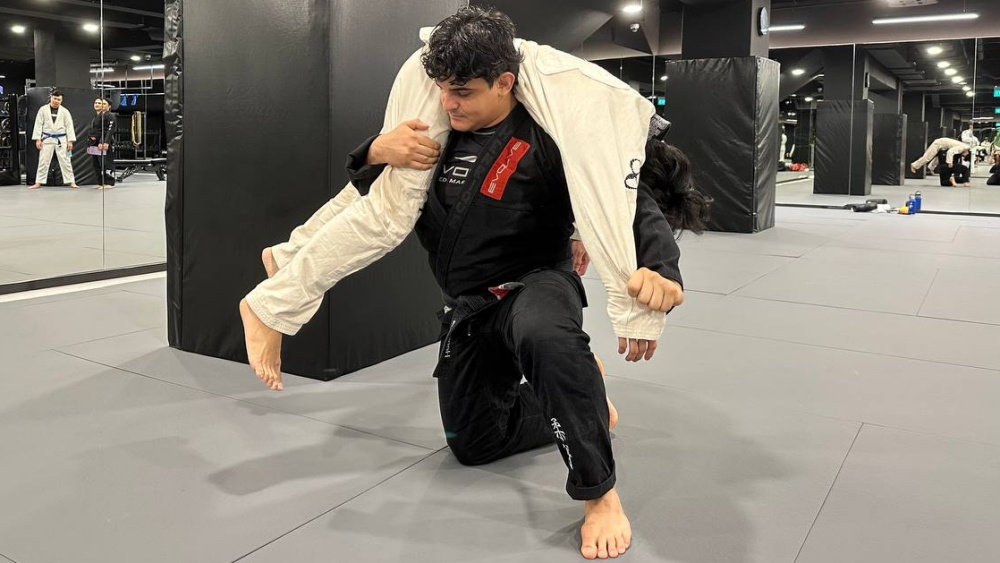Guard retention is one of the most important skills in BJJ. Unfortunately, many BJJ students neglect this critical skill. Often, BJJ students believe that good guard retention is reserved for those with good flexibility or athleticism. What these students fail to realize is that everyone can develop solid guard retention skills. In this article, we examine some concepts and techniques to help improve your guard retention.
Guard Retention Concepts
Concept #1: Face Your Opponent
To pass your guard, your opponent must get around your legs and establish a dominant position. However, with the exception of guard passes that come straight over or through the guard (which are rare), your opponent must obtain a proper angle. Therefore, if you rotate your body so that you are always facing your opponent, he or she won’t be able to attain the angle necessary to pass your guard.
Concept #2: Control The Head
If your opponent manages to obtain a dominant angle on you, you can still retain your guard by controlling his or her head. By controlling your opponent’s head with your hands, his or her movement will be limited, and he or she will have to address your hands before continuing the passing sequence. When your opponent is concerned about removing your hands, you can use this opportunity to re-establish your guard.
Concept #3: Knees To Chest
Proper knee position is imperative when trying to retain your guard. When someone is trying to pass your guard, you should bring your knees as close to your chest as possible. This limits the space between your knees and your armpits, which is the area your opponent aims to control. By keeping your knees close to your chest, your guard retention will improve almost immediately. While in this position, you can use your elbows on the mat and your hips to mirror your opponent’s movements. Generally, the further your knees are from your chest while in guard, the closer you are to having your guard passed.
Concept #4: Maintain Four Points Of Contact
Finally, when attempting to retain your guard, you should focus on maintaining four points of contact on your opponent. Obviously, this corresponds to the number of limbs that you have: two legs and two arms. When you maintain four points of contact with your opponent’s body, you will be able to push or pull him or her as needed to maintain your guard. Generally, maintaining four points of contact at all times makes it far more difficult for your opponent to pass your guard. In fact, if you were to just focus on this, your guard retention would improve significantly. Of course, as you transition between different guards, it may be necessary for you to momentarily give up one or more points of contact. When you do so, just be sure to re-establish four points of contact as soon as possible in order to prevent the guard pass. In addition, while maintaining four points of contact, it’s important to remember that you may also use your elbows and knees to do so when necessary. As long as you have something to use as a frame against your opponent’s body, you’ll make it difficult for him or her to pass your guard.
Guard Retention Techniques
In addition to the concepts above, there are several specific techniques you can use to retain your guard. If you implement the techniques below into your game, your guard retention skills will greatly improve.
Technique #1: The Half-Granby
The Granby roll is a wrestling technique named after Granby High School in Norfolk, Virginia, where it was popularized by coach Billy Martin, Sr. The half-Granby, which is a variation of this technique, is a highly effective way to retain the guard. Although the half-Granby may seem like a technique that requires great flexibility and agility, this isn’t the case. The technique only requires a moderate level of flexibility to perform, and most students can easily develop this with a little practice. The half-Granby is performed when an opponent begins passing your guard. In order to perform the half-Granby, fall back on your shoulders, lift your legs, and swing them around so that you are facing your opponent. Upon the successful completion of the half-Granby, you will have placed yourself back in an open guard position.
Technique #2: The Frame And Hip Escape
The second important guard retention technique that all BJJ students should master is the frame and hip escape. In order to perform the frame and hip escape technique, you must use a hand or foot to frame against your opponent as he or she attempts to pass your guard. One option is to frame against your opponent’s neck while establishing a grip on his or her collar. After establishing a frame, simply perform a hip escape and turn to face your opponent.
Frame And Hip Escape Drill
In order to practice the frame and escape drill with a partner, do the following:
- Lie flat on your back in a butterfly guard position.
- Allow your partner to push your legs to one side.
- Sit up and put your hand on the floor, supporting your weight with a straight arm.
- Put your other hand on your opponent’s shoulder and keep him or her away with a straight arm.
- Bring your heels towards your rear.
- Escape your hips away from your opponent.
- Reset and perform the same sequence on the other side of your body.
Conclusion
Although guard retention may not be the most exciting topic in BJJ, it is among the most important. By working on your guard retention skills, you’ll give your opponents major headaches when they are in top position. In addition, by developing the ability to successfully retain your guard, you’ll ultimately become more successful with your submissions, as your opponents will make mistakes as they become increasingly frustrated trying to pass your guard.

















